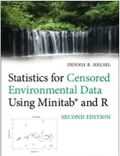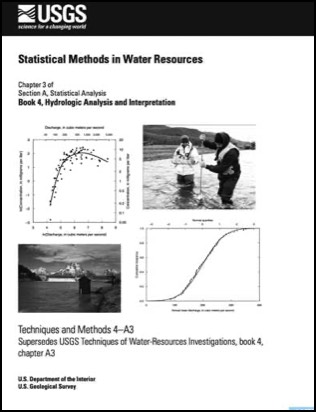
This textbook contains most of the methods that were used in our Applied Environmental Statistics course, including some of the course R scripts.
It is available from the US Geological Survey in electronic form (free pdf file) and as a hardback textbook for purchase (< $25 USD).
Water resources data tend to have many variables with a lower bound of zero, tend to be more skewed than data from many other disciplines, commonly contain censored data (less than values), and assumptions that the data are normally distributed are not appropriate. Computer-intensive methods (bootstrapping and permutation tests) now improve upon and replace the dependence on t-intervals, t-tests, and analysis of variance. A new chapter gives you principles to determine “How many observations do I need?” The chapter also presents distribution-free methods to help plan sampling efforts. The trends chapter has been updated to include the WRTDS (Weighted Regressions on Time, Discharge, and Season) method for analysis of water-quality data. This new version contains updated graphics and updated guidance on the use of statistical techniques. The text utilizes R, a programming language and open-source software environment, for all exercises and most graphics, and the R code used to generate figures and examples is provided for download.
